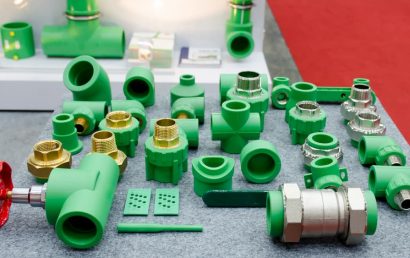Eliminating Corrosion Issues With Thermal Spray Coatings
To improve the functionality and aesthetic appearance of an item, particularly on metal surfaces, powder coatings and other coatings are applied. These thermal spray coatings, especially in the fabrication and construction industry, impede the corrosion that most metals fall prey to.
What Is Corrosion?
Corrosion is a destructive electrochemical, chemical, or phenomena that affects an object and/or its aesthetic appeal. It can cause structural failure in extreme cases.
Out in the real world, most people have seen corrosion as a result of rust on cars, bikes, pipes, etc. But corrosion exists in many forms within almost every industry. With the application of thermal spray coatings, however, corrosion can be prevented and damaged or affected parts can be rebuilt.
Corrosion Prevention
If you picture the process of corrosion as a triangle, the three corners would consist of the following:
- Electrolyte
- Anode
- Cathode
Remove any one of the corners and the triangle is broken – thereby preventing corrosion. As an example, to eliminate the electrolyte (the main technique for corrosion reduction), between the electrolyte and the metal, a barrier must be placed. Coat the metal that would have been subject to corrosion with another metal. This coating puts a physical barrier between the electrodes and the electrolyte or dissolves in place of the metal (sort of a sacrificial coating).
Corrosion Types
As suggested earlier, within every industry, corrosion exists in one form or another. The following are the main types of mechanisms for corrosion:
- De-metalification or selective leaching
- Corrosion-erosion
- Fretting corrosion
- Bimetallic or galvanic corrosion
- Crevice corrosion
- Filiform corrosion
- Intergranular corrosion
- Corrosion fatigue
- Stress-corrosion cracking
- Pitting corrosion
- Uniform or general corrosion
Uniform or general modes are responsible for the corrosion that occurs in the majority of most metal failures. Stress corrosion cracking is the next most common cause. Intergranular and pitting corrosion are next. Of all the kinds of corrosion, these four types account for approximately 80%.
Stop Corrosion in Its Tracks!
There are any number of techniques with which to retard corrosion. Some of the available techniques include the following:
- Using metallic coatings
- Use phosphates, chromates, or some other conversion coating
- Utilize phosphates, zinc rich paints, or some other inorganic coating
- With powder coatings, paint, or some other organic coating
- Employ cathodic protection
- To optimize geometry, alter the design
- In the case of components that rotate in seawater, rather than brass, use a more corrosion resistant material
- Alter the environment in which the substrate is employed
The substrate, or the part, component, or surface to which a thermal spray coating is being applied, must be prepared appropriately. The coating must adhere to the surface very tightly. Without proper preparation, the substrate will corrode because the coating has not adhered sufficiently.
At A&A Coatings, we are experts in the field of protective coatings. Whether your goal is to eliminate corrosion, erosion, rebuild a part or component, or something else, we have the exact coating required and the most up-to-date technological methods through which to apply it. The right protective coating can reduce maintenance and part replacement costs and improve the bottom line for a business owner. If you would like to speak to someone about what thermal spray coatings can do for you, contact us today.
The longer you wait to coat your components, the more time and money you will lose as a result of corrosion.



